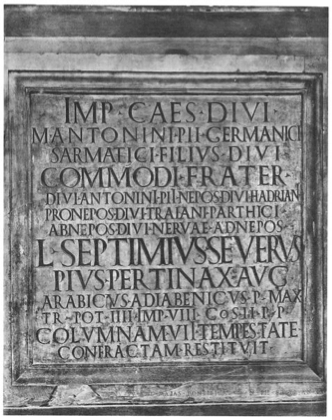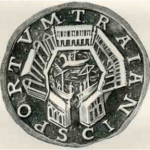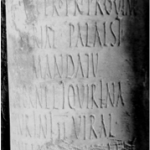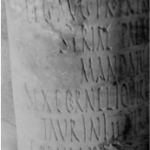The Epigraphy and Iconography of Roman Mediterranean Ports
I wrote my Master’s thesis research two years ago, conducted under the supervision of Pascal Arnaud and based at the University of Lyon 2 Lumière. My research focused on the study of the iconography in order to reconstruct port architecture of the Roman period. Through this work, I compiled a corpus of port representations and established a typology of architectural and structural characteristics of Roman port landscapes. The other aspect of my research was to study the urban morphology of a Roman port by comparing the archaeological, epigraphic and literary evidence with the iconographic images of the same port. I did this in order to understand relationships between them and to distinguish differences in what they represented. I also speculated as to whether there was such a thing as an archetype in the layout and function of monuments in the cultural landscapes of ports. I di this by focusing upon three well documented ports: Ostia, Puteoli and Kenchreai.
The PortusLimen project presents me with a great opportunity to continue and broaden my research into this field by taking epigraphic evidence into account. Greek and Latin honorary, funerary and commemorative inscriptionsprovide valuable spatial information and confirm the existence of structures known to us from the abundant iconography of the Imperial period. For instance, the votive columns found at Caesarea Maritima are mentioned one inscription from Ephesus and another from Portus, as well as appearing at the latter on Trajanic coins.
 Inscription on the base of a column found in Portus (Trajanic Port) Inscription on the base of a column found in Portus (Trajanic Port)© Nutzung der Graphik nur für wissenschaftliche Zwecke erlaubt |
CIL 14, 00113 (p. 481)[Imp(erator) Caesar] d[ivi] / [M(arci) Antoni]ni Pii Germani[ci] / [Sarmati]ci filius divi / [C]ommodi frater / divi Antonini Pii nepos divi Hadriani / pronepos divi Traiani Parthici / abnepos divi Nervae adnepos / L(ucius) Septimius Severus / Pius Pertinax Aug(ustus) / Arabicus Adiabenicus p(ontifex) m(aximus) / tr(ibunicia) pot(estate) IIII imp(erator) VIII co(n)s(ul) II p(ater) [p(atriae)] / columnam VII tempest[atis] / confractam restitui[t] |
DONALDSON, T. L., Ancient architecture on Greek and Roman coins and medals, architectura numismatica, éd. Argonaut, Chicago, 1966, p.333.
BURRELL, B., Two Inscribed Columns From Caesarea Maritima, aus: Zeitschrift für Papyrologie und Epigraphik, 99 (1993), p.287–295.
© Dr. Rudolf Habelt GmbH, Bonn
BURRELL, B., Two Inscribed Columns From Caesarea Maritima, aus: Zeitschrift für Papyrologie und Epigraphik, 99 (1993), p.287–295.
© Dr. Rudolf Habelt GmbH, Bonn
The aim of my PhD is to explore questions that arise from a combined understanding of epigraphic and iconographic evidence for the development of Roman Mediterranean ports landscapes. Thus, I have started to create a database of inscriptions and representations linked to the project GIS, and am starting to reference elements of infrastructure, buildings and people involved in the management of the port. The objectives of this work are to comprehend the spatial and functional characteristics of the Roman port from evidence mentioned above and to establish whether or not they are represented in an idealised or realistic way.
The spatial analysis that involves architecture and infrastructure is based on studying Greek and Latin inscriptions complemented by iconographic documentation. I am identifying inscribed architectural pieces (e.g. columns), looking at well documented ports, geo-referencing inscriptions found in their port context (with an eye to defining a clear limit of what constituted the “port”).
The examination of epigraphic evidence aims to study the spatial layout and architecture of the Roman port and shed light upon the organization of human activities within it. This work should also provide new insight beyond Puteoli and Portus by looking at such major provincial ports as Lepcis Magna, Ephesus, Smyrna, Athens, Corinth, Patara, and lesser ones like Caunus, Kreusaï, Andriakè, Aperlaï.




